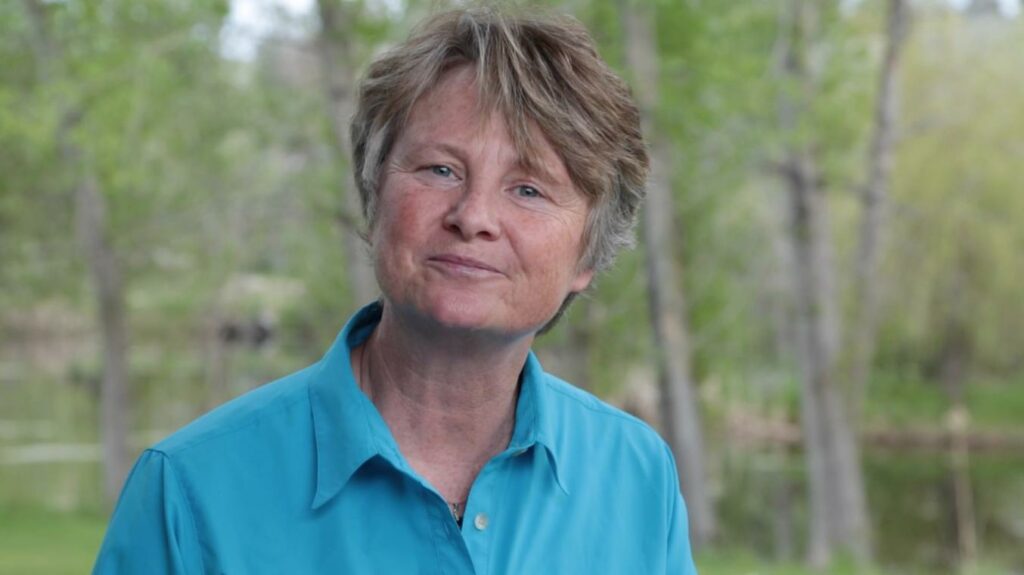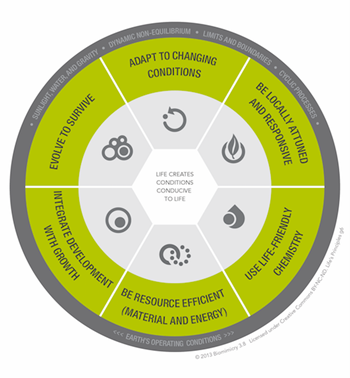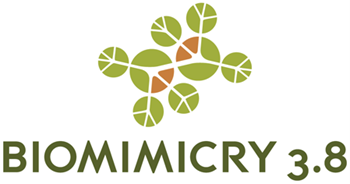
Janine Benyus (Biomimicry)
“NATURE: OUR BEST TEACHER, OUR BEST ALLY“
Nature. How do you see it? Is it something to dominate? Is it something to learn from? Is it something to respect? When I say Nature is God. It expresses the genius of the Universe. Janine is right: if we change perspective, our life will change. Let’s stop thinking of it as a warehouse of goods”. Let’s think of it as a “warehouse of ideas” instead.
Biomimicry is the science that studies and imitates biological processes, the way Nature works, to improve human technology and life. In Biomimicry Nature is our Model, our Measure (or benchmark), our Mentor. We should help it, not exploit it, we should learn from it, not teach it. What makes Nature so special? Can it definitely help us overcome our challenges?
Janine Benyus, “Biomimicry: Innovation Inspired by Nature” and Co-founder of the Biomimicry Institute, answered to these and other questions.


For further details – https://biomimicry.org/
INTERVIEW – (July 2019)
This interview was made and published in July 2019 on www.lteconomy.org
Subject: Biomimicry and Nature
By Dario Ruggiero, Founder of Long Term Economy
Highlights
- Our current society, especially the Western and industrial culture, for the last 2 centuries has seen Nature as “a warehouse of goods”. I call it “the extractive paradigm”.
- What happens if we start seeing Nature as a teacher or a mentor rather than as a warehouse of goods? Nature is the wisest teacher we could have.
- This idea that technology or innovation is the destroyer of Nature only comes from the distorted idea that humans have that we are the only ones who can make innovation and technology. We should see the natural world as an engineer, as a chemist, a physicist, an architect.
- Every kind of energy generation, from the sun, wind, and waves really comes from biomicric ideas.
- When with Biomimicry we give value to a species, we as humans try to do our best to avoid such species becoming extinct.
- The more people understand your language, the more your ability to change the system. That is why we work with companies and give them consultancy with our “Biomimicry 3.8”.
- If readers are interested, they should connect at :Biomimicry 3.8(Re)Connect -materials during this time of quarantine
⇓
“What happens if we start seeing Nature as a teacher
or a mentor rather than as a warehouse of goods?
Nature is the wisest teacher we could have.”
⇓
Question 1 | Nature: is it something to dominate or be inspired from?
Exactly! The main question for the current society is this: is Nature something to exploit or is Nature something we can learn from, something to imitate? Our current society, especially the western and industrial culture, for the last 2 centuries has seen Nature as “a warehouse of goods”. I call it “the extractive paradigm”: what can we extract, domesticate, harvest today from the natural world? It’s not the right way of seeing it if we want to be “globally sustainable”. That’s a myopic way of seeing Nature and our staying on planet Earth; and the unintended consequences of that way are gradually emerging (Climate Change is only one of them).
So let’s come to the point… Let’s talk about Biomimicry. What Biomimicry does is first “to think differently”. What happens if we start seeing Nature as a teacher or a mentor rather than as a warehouse of goods? Nature is the wisest teacher we could have. It’s a gift for us… Let’s think about it. How many years have Nature had to evolve and perfect itself? 3 bn years! Nothing better than Nature can give us inspiration for “sustainable” designs and blueprints, new chemical recipes, new processes, and even new system strategies?Nature can inspire us in the way we make our world, power ourselves, feed ourselves, even in the way we organize our economies. That is the right way of seeing it, and in this way we give it value; we start to help rather than degrade our natural world.

⇓
Question 2 | Innovation and Nature
So not a warehouse, but a wise source of knowledge… Let’s move on and look more deeply at the subject of innovation. Currently, most of us associate innovation to technology and so we view it as an opponent to, a destroyer of Nature. How can innovation and nature help each other?
“Every kind of energy generation, from sun, wind, waves
really comes from biomicric ideas”
⇓
Question 3 | Nature and the global challanges
Let’s talk more about point number 1 (stop emissions). Substantially it’s about finding new ways of gathering energy. I am sure that most scientists are looking at the natural world: artificial photosynthesis is the holly ground: soil-driven, ubiquitous, inexpensive. As for wind energy scientists are looking at the way palm trees live, able to stand up in very big wind storms, to create hurricane-proof wind turbines. If we look at the sea, there is an underground energy generator in Australia that is called Bio-wave. Every kind of energy generation, from sun, wind, waves comes from biomicric ideas. There is also progress in the way we use energy, by building structures which allow us to save big quantities of energy. It is interesting the case of a company called “Encycle”. They have looked at the way social insects (i-g., bees etc…) work and is applying these principles in a lot of buildings, especially commercial buildings, where the communication system uses the same protocols used by bees, reducing their energy demand by an estimated 25% (see answer #5)
Question 4 | Biomimicry and endangered species
That’s a very key question in our dialogue. I very, very like it because when with Biomimicry we give value to a species, we as humans try to do our best to avoid such species become extinct. There is for example a company called Sharkleak, which is creating medical products by imitating the skin of sharks that instead of killing bacteria, repeals them. So when I hear about sharks being harvested for soups (and millions of them are killed every year), that breaks my heart. There is a company called Cold Blue Planet. It knows how coral rives work and have got its recipe from coral rives. There is a species called “Gastric Breathing Frog”. Today they have been studying for gastric medical solutions, for people who have terrible diseases that affect their gastric system. And unfortunately, that frog is going to be extinct.
“The closer you make your agricultural field to its natural native ecosystem,
the more likely you are to create more soil sources,
support wildlife and hold water in a rainstorm”
⇓
Question 5 | Biomimicry in practice
Agriculture is a very interesting field, because another way of reducing CO2 in the atmosphere is with the use of “Regenerative agriculture”, a kind of agriculture that improves itself over a long period. And some of the best solutions for agriculture especially in the Developing world come from Biomimicry; the principle again is very simple: the closer you make your agricultural field to its natural native ecosystem, the more likely you are to create more soil sources, support wildlife and hold water in a rainstorm. One of the main principles that comes from nature (and we use in Biomimicry) is to integrate trees with agriculture and pasture, a Permaculture kind of approach.
Source: Biomimicry
“The more people understand your language,
the more your ability to change the system”
⇓
Question 6 | Biomimicry – next challenges and schools
Our next challenges/goals? To incorporate Biomimicry in the way we make our word. That’s not a dream. The more people understand your language, the more your ability to change the system. That is why we work with companies and give them consultancy with our “Biomimicry 3.8”. The company brings to us a challenge. We “biologize” it, understand how nature would answer and find a likewise approach. Think about the water-repelling challenge. There are a lot of examples in nature to face it.
As for school we have a non-profit organization that is the Biomimicry Institute (Biomimicry.org). We work with a big educational network made of teachers and Biomimicry professionals who help us solve challenges. We have Biomimicry hubs all over the world. And we are trying to connect them. We also have a 2-year master course, and trough the Biomimicry center we also have a lot of online courses.
So we are trying to do both things: 1) Educate; 2) Deal with professionals.

Source: Biomimicry
⇓
Question 7 | Biomimicry and Long Term Thinking
We are a community of Long Term Thinkers. Our mission is to develop Long Term Thinking (the ability to think with a long term in mind to preserve wellness for the future generations) and spread it around the world. How can Biomimicry relate to it? Are Biomimicry supporters long term thinkers themselves?
I would say “yes”. If we want to create an Economy that works for sustainability in the long period (Long Term Economy) we have to address “what” we make and “how” we make it, in other words we have to address the life-cycle of our products. But not only that… There ore cities that must be designed, built, organised and restructured in a way that impact less and less on our ecosystems, in a way that imitate Nature.
A lot of challenges we have just in front of us. When you become a Biomimicry researcher you become aware of the fact that any organism is literally a library of solutions, and it is still evolving. You know those solutions are designed for long-term survival. We as Homo sapiens have developed for just 200-250 thousand years. Nature has had 3bn years to develop. Nature itself has been designed (or has designed itself) to last indefinitely. In that perspective, Nature itself is a Long Term Thinker and we, Biomimicry researchers who follow it, are Long Term Thinkers.
Let me give you one last example. One of our projects is to challenge people in designing “generously”. That means, design to make products and services which are generous towards our planet. This projects includes to sub-projects: Biomimicry Global Design Challenge and Youth Design Challenge. –

